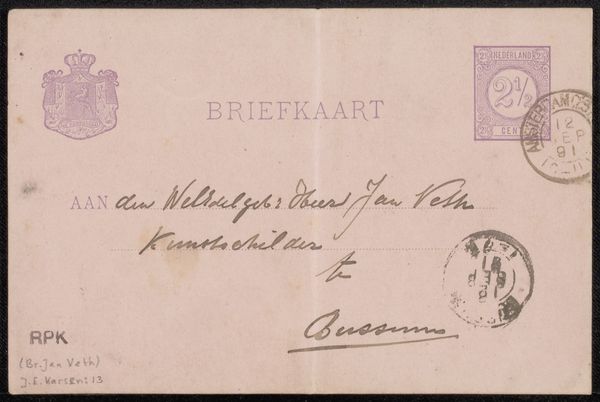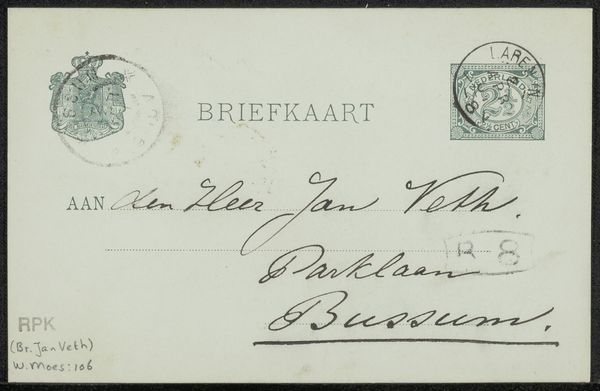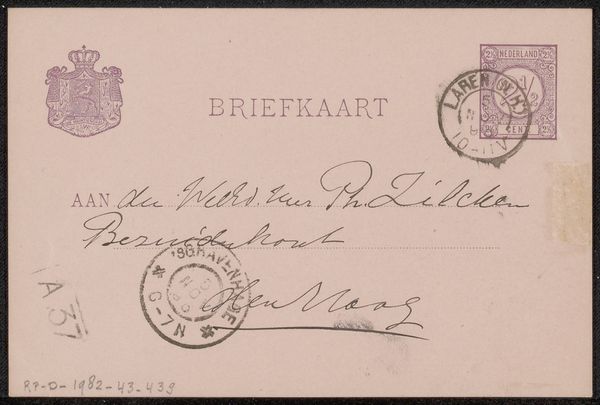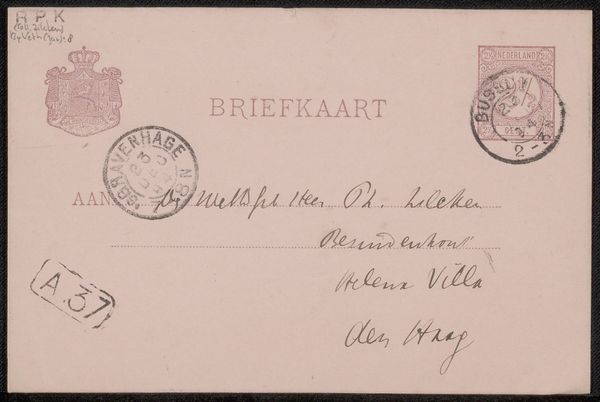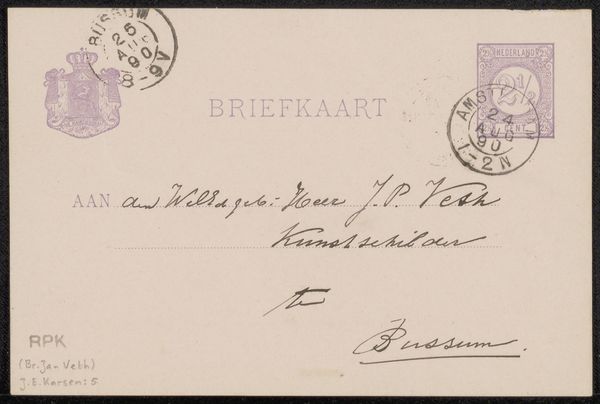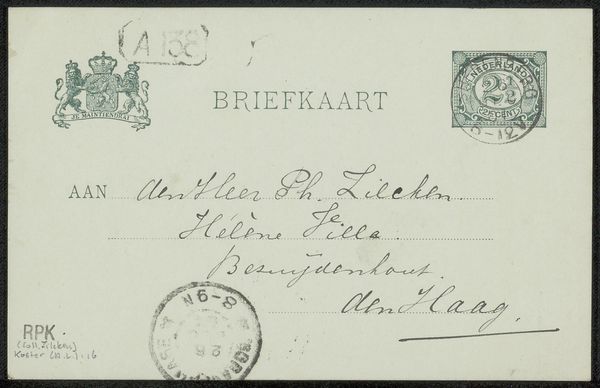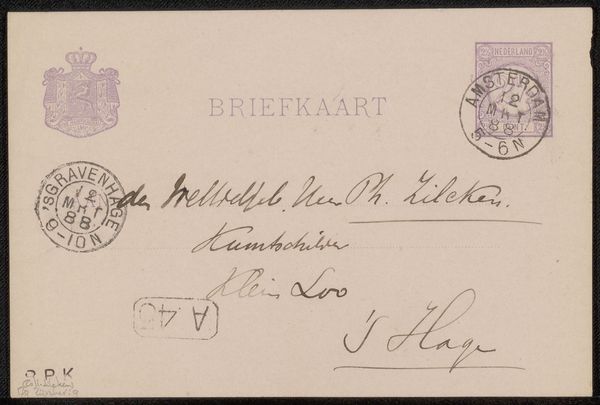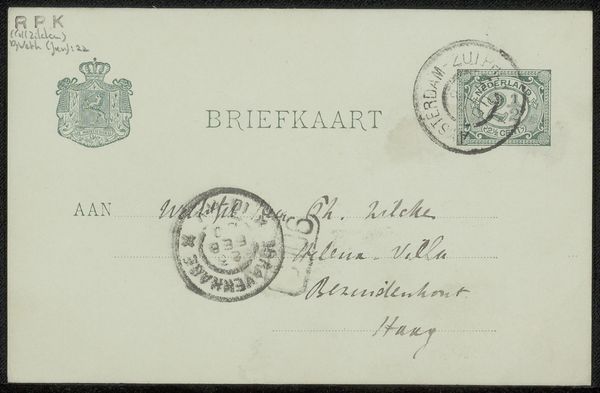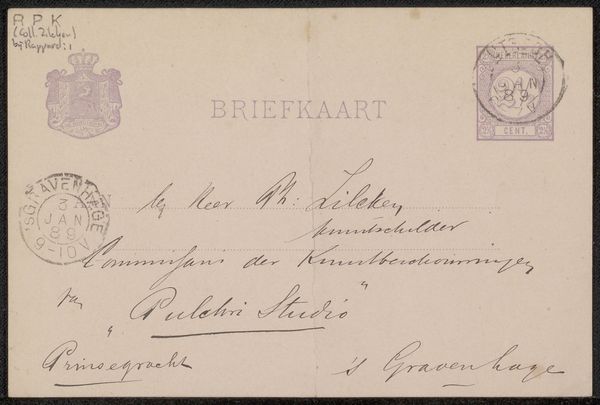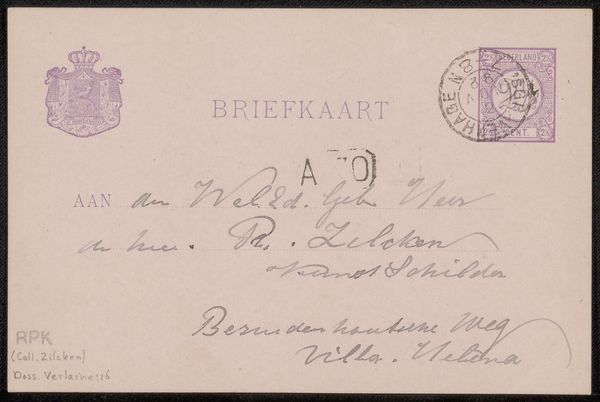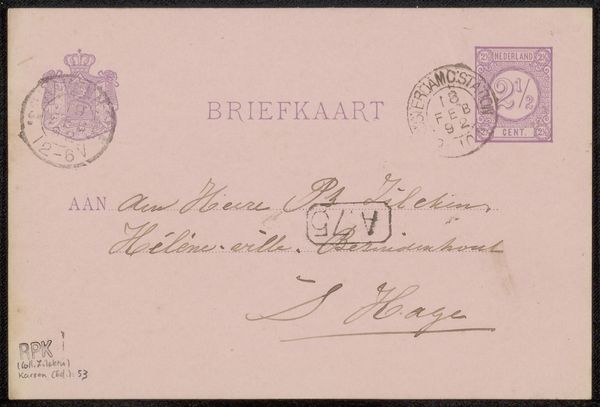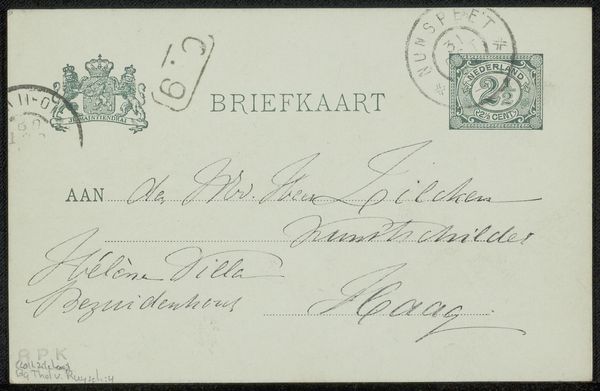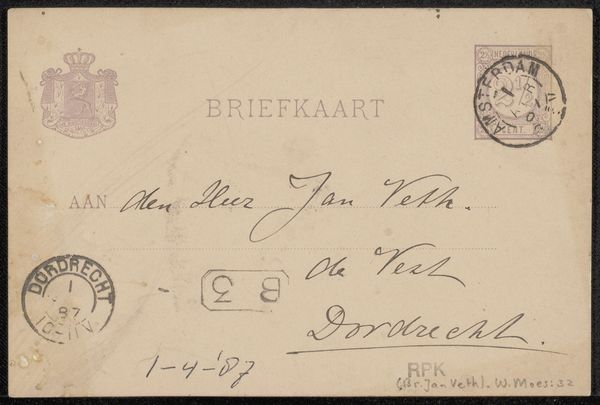
drawing, paper, ink, pen
#
drawing
#
ink drawing
#
pen sketch
#
paper
#
ink
#
pen work
#
pen
Copyright: Rijks Museum: Open Domain
Editor: This is a postcard addressed to Pieter Haverkorn van Rijsewijk, created before 1922 by Jan Veth, using ink on paper. It's pretty simple, but seeing a personal artifact like this makes me wonder about the person who sent it and its place in the everyday social sphere. What can we learn from this sort of ephemera? Curator: That’s a great starting point. What intrigues me is how this simple postcard reflects the evolving role of museums and art within society. Postcards like this show art institutions fostering and maintaining personal relationships with their audiences. Note the stamp and the Rotterdam postmark, alongside the recipient being connected to Museum Boymans. This wasn't merely about display; it's about active engagement. Does the fact that the message itself is not available shift our perception of its worth? Editor: Absolutely. Knowing the message could unlock more of its social context. Without it, the focus shifts to the object itself, its design, and its role in enabling communication. Curator: Exactly. Consider the handwriting, the stylized typography of "BRIEFKAART" - these were design elements intentionally crafted. The postal system itself, then relatively new, democratized communication and art appreciation. Now, can you see how institutions helped disseminate artistic sensibility to wider audiences through mundane interactions, thus embedding them into social life? Editor: I do. So, it's not just about the postcard as a piece of art, but how it signifies the institution’s growing outreach and role within its community at that time. Thanks; that gives me a new perspective. Curator: Precisely. These pieces provide insights into the reciprocal relationship that institutions built, engaging different kinds of audiences with art beyond traditional display and exhibitions.
Comments
No comments
Be the first to comment and join the conversation on the ultimate creative platform.

